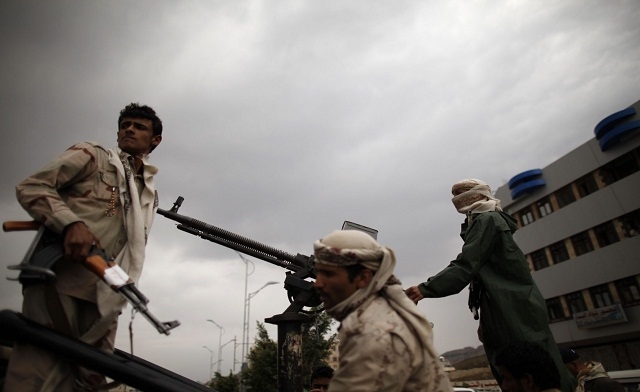The World Health Organization (WHO) has revealed that one in three women have experienced gender-based violence globally, in the form physical or sexual violence by an intimate partner or a stranger.
In its latest report, the organisation added that the number has remained largely unchanged over the past decade, and that violence against women remains devastatingly pervasive and starts alarmingly young.
The report said that this violence starts early, with one in four young women aged15-24 and who have been in a relationship having already experienced violence by an intimate partner.
“Violence against women is endemic in every country and culture, causing harm to millions of women and their families, and has been exacerbated by the novel coronavirus COVID-19 pandemic,” said Tedros Adhanom Ghebreyesus, WHO Director-General.
Ghebreyesus added, “But unlike COVID-19, violence against women cannot be stopped with a vaccine, as we can only fight it with deep-rooted and sustained efforts, by governments, communities, and individuals.”
He noted that these efforts will change harmful attitudes, improve access to opportunities and services for women and girls, and foster healthy and mutually respectful relationships.
The report showed that violence at the hands of intimate partners is by far the most prevalent form of violence against women globally, affecting around 641 million.
“However, 6% of women globally report being sexually assaulted by someone other than their husband or partner,” the WHO report said, “Given the high levels of stigma and under-reporting of sexual abuse, the true figure is likely to be significantly higher.”
The report presents data from the largest ever study of the prevalence of violence against women, conducted by WHO on behalf of a special working group of the United Nations (UN). It is based on data from 2000 to 2018, and updates previous estimates released in 2013.
While the numbers reveal already alarmingly high rates of violence against women and girls, they do not reflect the ongoing impact of the COVID-19 pandemic.
Pandemic Impact
The WHO and its partners warn that the COVID-19 pandemic has further increased the exposure to gender-based violence, as a result of measures such as lockdowns and disruptions to vital support services.
“It is deeply disturbing that this pervasive violence by men against women not only persists unchanged, but is at its worst for young women aged 15-24 who may also be young mothers,” said Phumzile Mlambo-Ngcuka, Executive Director at UN Women, “That was the situation before the pandemic stay-at home orders. We know that the multiple impacts of COVID-19 have triggered a ‘shadow pandemic’ of increased reported violence of all kinds against women and girls.”
Mlambo-Ngcuka added, “Every government should be taking strong, proactive steps to address this, and involving women in doing so.”
Many countries have seen increased reporting of intimate partner violence to helplines, police, health workers, teachers, and other service providers during lockdowns. However, the full impact of the pandemic on prevalence will only be established as surveys are resumed, the report notes.
Areas of highest concern
The report added that violence disproportionately affects women living in low- and lower-middle-income countries.
“An estimated 37% of women living in the poorest countries have experienced physical and/or sexual intimate partner violence in their life, with some of these countries having a prevalence as high as 1 in 2,” the report said.
It showed that Oceania, Southern Asia, and Sub-Saharan Africa have the highest prevalence rates of violence among women aged 15-49 committed by intimate partners. Figures here mean from 33-51% of women suffer such violence.
The lowest rates are found in Europe (16–23%), Central Asia (18%), Eastern Asia (20%) and South-Eastern Asia (21%).
“Younger women are at highest risk for recent violence,” the report said, “Among those who have been in a relationship, the highest rates (16%) of intimate partner violence in the past 12 months occurred among young women aged between 15 and 24.”
Prevention and response
“Violence in all its forms can have an impact on a woman’s health and well-being throughout the rest of her life, even long after the violence may have ended,” the report said, “It is associated with increased risk of injuries, depression, anxiety disorders, unplanned pregnancies, sexually-transmitted infections including HIV and many other health problems. It has impacts on society as a whole and comes with tremendous costs, impacting national budgets and overall development.”
The report mentioned that preventing violence requires addressing systemic economic and social inequalities. It also ensures access to education and safe work, and changing discriminatory gender norms and institutions.
Successful interventions also include strategies that ensure essential services are available and accessible to survivors. This also means support for women’s organisations, with strategies that challenge inequitable social norms, reform discriminatory laws and strengthen legal responses, among others.
“To address violence against women, there’s an urgent need to reduce stigma around this issue, train health professionals to interview survivors with compassion, and dismantle the foundations of gender inequality,” said report author Claudia Garcia-Moreno, “Interventions with adolescents and young people to foster gender equality and gender-equitable attitudes are also vital.”
Countries should honour their commitments to increased and strong political will and leadership to tackle violence against women in all its forms, through:
- Sound gender transformative policies, from policies around childcare to equal pay, and laws that support gender equality;
- A strengthened health system response that ensures access to survivor-centred care and referral to other services as needed;
- School and educational interventions to challenge discriminatory attitudes and beliefs, including comprehensive sexuality education;
- Targeted investment in sustainable and effective evidence-based prevention strategies at local, national, regional and global levels; and
- Strengthening data collection and investing in high quality surveys on violence against women and improving measurement of the different forms of violence experienced by women, including those who are most marginalised.




